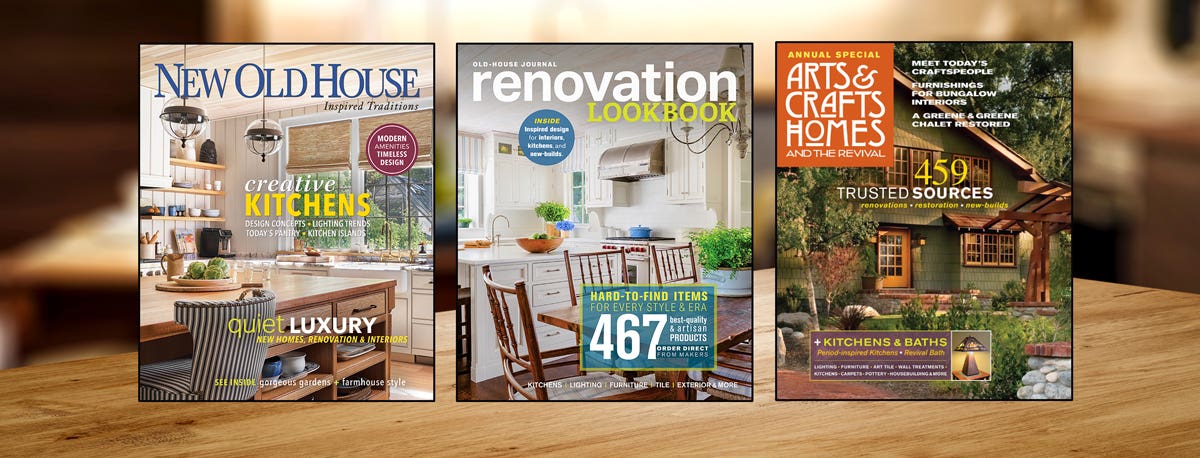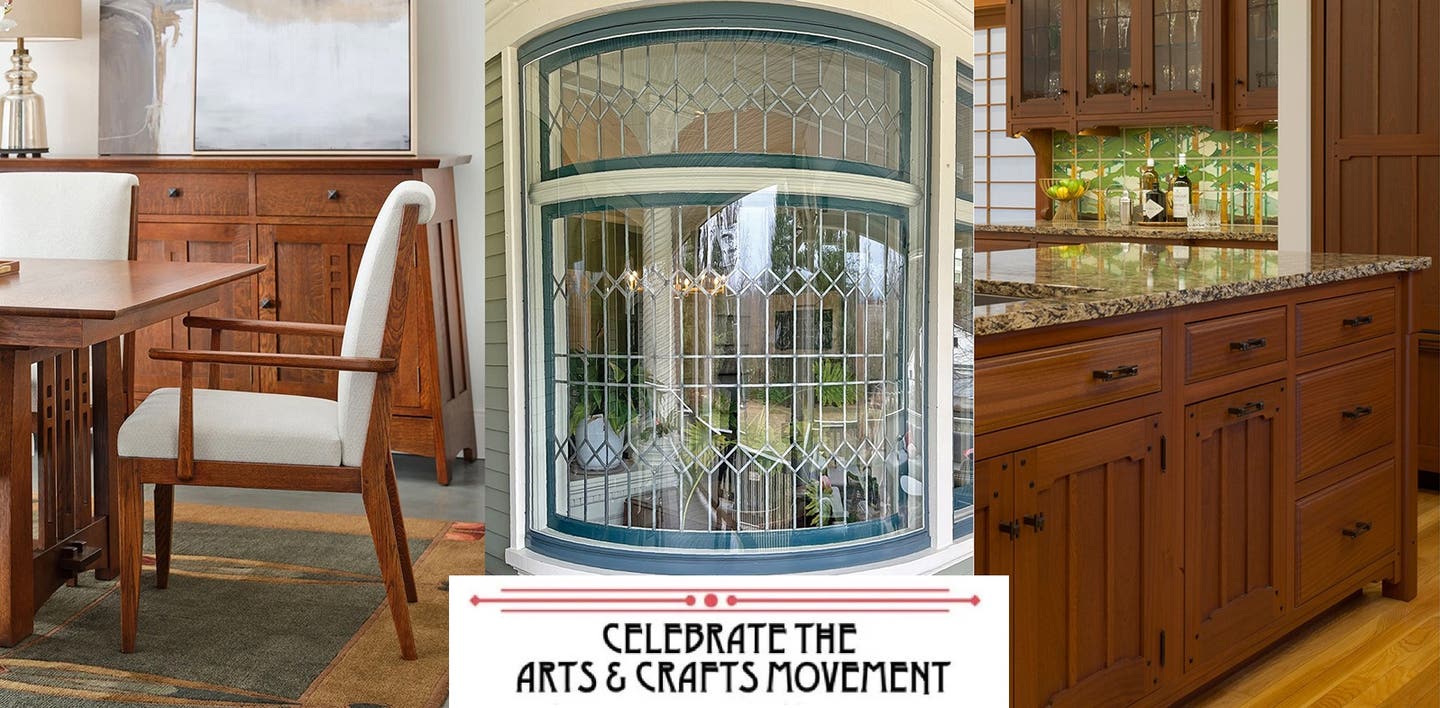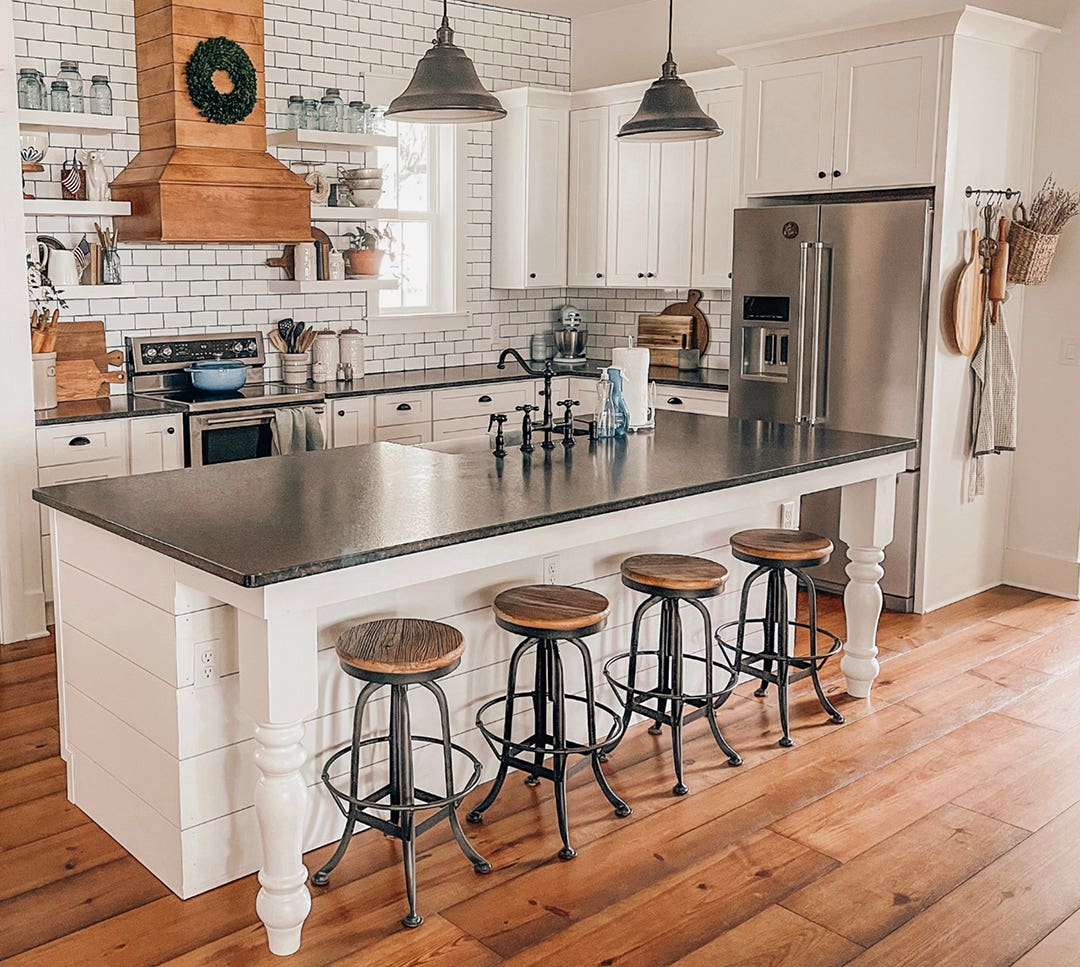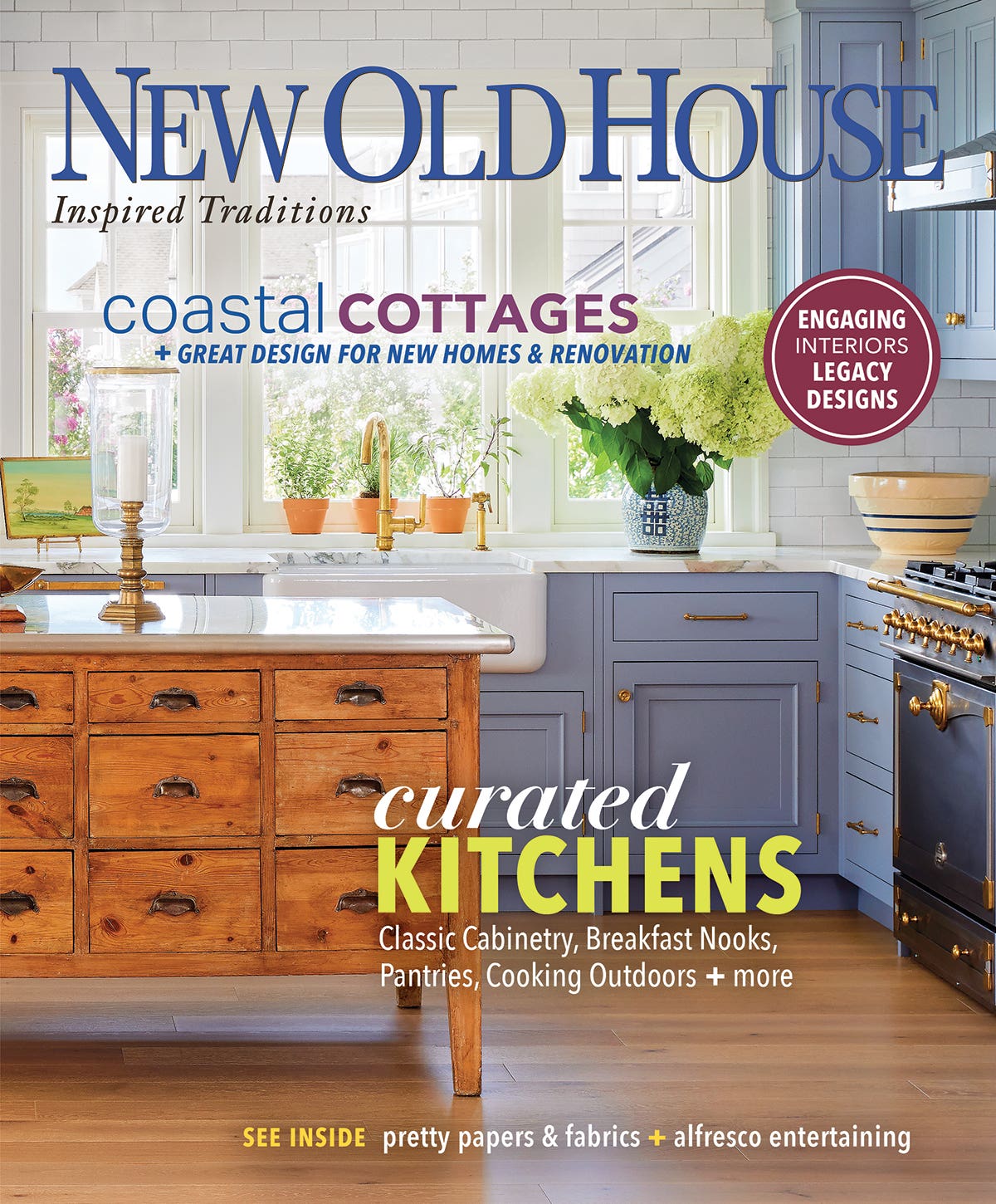Coloring Outside the Lines
When you were a little kid, in the inward years before arithmetic class, did you feel in your heart that there were good numbers and bad ones? For me the…
When you were a little kid, in the inward years before arithmetic class, did you feel in your heart that there were good numbers and bad ones? For me the even numbers were good, but 3 and 7 gave me the creeps. I think I have that kind of unexamined prejudice about architectural styles. Ironically, I favor the “odd” ones—that long asymmetrical evolution running from Gothic to chalet to Queen Anne and Shingle Style to Art Deco. The nice, even ones—Georgian, neoclassical—leave me slightly unnerved. Do I think they demand obedience?
(I also harbor the conviction that just living in a Modern house—say, a Richard Neutra as photographed by Julius Shulman—would cause the inhabitants to be thin and attractive.)
Arts & Crafts is, in my private mind, the antithesis of compliance. Architects and owners are always pushing the boundaries. An owner building a new Craftsman house decides to incorporate salvaged beveled glass, rich with baroque curves. (Or are they Art Nouveau?) Rather than tossing the burnt clinkers, celebrated architects mix the ugly bricks with arroyo stone and we call it peanut brittle. (Doesn’t sound like a course at the École, now, does it?)
I encountered Arts & Crafts free spirit in trying to write about interior paint-color schemes. The advice, always good if trite, is to use earthy colors. So why do I remember fondly the San Mateo bungalow with walls in tints of apricot and teal, pulled from paintings hung on the walls? Dedicated restorers, the homeowners certainly had heard the drill.
I once wrote that Arts & Crafts is the preference of wild boys and back-to-the-landers, cuddlers and artists. Add to that naughty people who never met a color they didn’t like. Another reminder that you can find precedent for anything you really want to do, and that Arts & Crafts is for creativity foremost. Do great work, color outside the lines, so generations to follow will have something to copy.
Patricia Poore,Editor
ppoore@homebuyerpubs.com
10 Harbor Rd., Gloucester, MA 01930
Patricia Poore is Editor-in-chief of Old House Journal and Arts & Crafts Homes, as well as editorial director at Active Interest Media’s Home Group, overseeing New Old House, Traditional Building, and special-interest publications.
Poore joined Old House Journal when it was a Brooklyn-brownstoner newsletter in the late 1970s. She became owner and publisher and, except for the years 2002–2013, has been its editor. Poore founded the magazines Old-House Interiors (1995–2013) and Early Homes (2004–2017); their content is now available online and folded into Old-House Journal’s wider coverage. Poore also created GARBAGE magazine (1989–1994), the first unaffiliated environmental consumer magazine.
Poore has participated, hands-on, in several restorations, including her own homes: a 1911 brownstone in Park Slope, Brooklyn, and a 1904 Tudor–Shingle Style house in Gloucester, Massachusetts, where she brought up her boys and their wonderful dogs.







